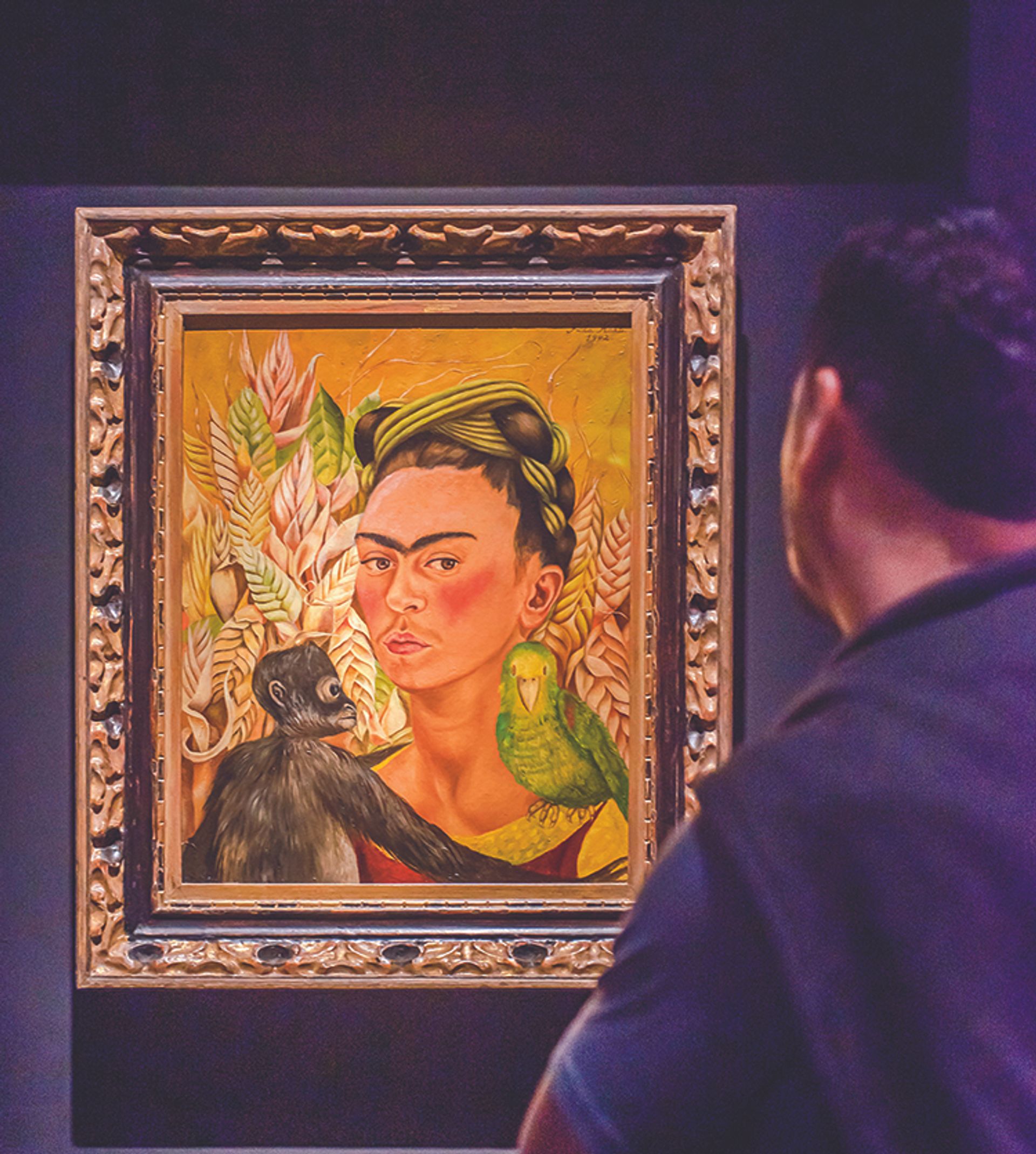It’s not often you get Frida Kahlo all to yourself. It was my chance during my recent visit to Buenos Aires in Argentina, as well as its celebration of Latin American art, Malba.
I had been invited to see the museum’s new exhibition, third eye, which brings together the collections of the Latin American Art Museum of Buenos Aires and its founder, Eduardo Costantini. The day was a Tuesday, when it’s closed to the public, and I happened to be the only guest.
What immediately strikes the visitor is the confidence of the museum, which is the largest museum dedicated to Latin American art in the world. This sense of scale and ambition is embodied by the building – the work of three young Argentinian architects after a competition involving 45 countries – and the projection of more than 700 works of art acquired throughout the Latin American continent. .
Chaotic start
The institution could not have opened at a worse time, September 21, 2001, ten days after the September 11 terrorist attacks and just as Argentina was entering one of its cyclical periods of economic chaos.
Having weathered waves of international and domestic instability, Malba recently celebrated its 21st birthday. (The pandemic got in the way on the 20th.)
In doing so, he announced an expansion plan. This time, Costantini opted for a site 50 km from Buenos Aires, in the Escobar district. The location reflects the growing popularity of areas north of the city and the wider phenomenon of flight from urban centers post Covid. “Recent events have made the need to reinvent cities and decentralize the cultural offer a top priority,” Costantini said.
The new site will focus more specifically on Argentinian art, and will also include Argentinian music, cinema, theater and dance
The new site will differ from the current one in several respects. It will focus more specifically on Argentinian art, but will also expand to Argentinian music, cinema, theater and dance. The architect this time is Spanish firm Herreros, behind the remarkable Munch Museum (a design that mimics the Leaning Tower of Pisa) on Oslo’s waterfront. Malba Puertos, as it will be called, combines three exhibition pavilions and a large transparent roof surrounded by gardens and woods. Construction has begun and the new museum is expected to open in March 2024.
From surrealism to hyperrealism
Back in the Palermo neighborhood of Buenos Aires, crowds continue to flock to Malba and the exhibit, which runs until September 1. The star print is Kahlo, specifically two of her paintings and a series of her photographs, letters and personal effects, which are housed in a special room. In 2021, Costantini paid $34.9 million at Sotheby’s in New York – a record for a work by a Latin American artist, for Diego and you (Diego and me). The 1949 self-portrait depicts Kahlo in tears, her wet hair almost choking her. On her forehead, above her dark eyebrows, is the face of her husband, Diego Rivera, who in turn has an eye on her forehead, symbolizing their tumultuous relationship, her obsession with him, and her suffering in his hands. This is the first time the painting has been shown publicly in 25 years, having been held in a private collection in Texas.

1942 by Frida Kahlo Self-Portrait with Monkey and Parrotacquired for $34.9 million, at third eye show at the Malba
Photo ©Santiago Orti
The rest of the first-floor galleries are devoted to a wide range of Central and South American art: 240 works will remain on display, ranging from surrealism to political hyperrealism, many of which have not been shown publicly for decades.
My collection highlights include Tarsila de Amaral Abaporu (1928) – a word in the indigenous Tupi-Guarani language meaning “man who eats man” – which uses the colors of the Brazilian flag to represent a humanoid creature with a small beak and giant feet. The Great Temptation (1962), by Argentinian artist Antonio Berni, depicts a pretty blonde woman holding a new-model blue car in her left hand, under the gaze of destitute men, an enraged-looking dog and an aging sex worker. Solitaire Editor (2011), meanwhile, is an audiovisual installation by Colombian Oscar Munoz that recalls the terrible human rights violations of military dictatorships across the region.
Obstacles to acquisition
Several hundred other works remain in storage. But the museum’s acquisitions committee, made up of six people, remains active and is constantly on the lookout for new works, even if Argentina’s always complex and punitive customs rules make finding new works much more difficult than it might be. should be. The sheer cost of import duties for goods entering Argentina, including works of art, further complicates the business. The costs apply to both Argentine museums and private collections, which means that throughout the country many works of art are often technically registered as long-term loans rather than permanent acquisitions.
Constatini has suggested that it could take up to three decades to complete the museum’s transition from a private space to a public institution. While his status may be in flux, his ambition for new galleries – and new works to fill them – continues.
